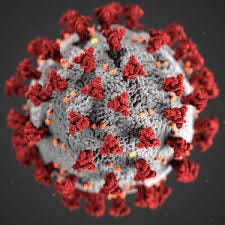Getting your workplace ready for COVID-19
In January 2020 the World Health Organization ( WHO) declared the outbreak of a new coronavirus disease
in Hubei Province, China to be a Public Health Emergency of International Concern. WHO stated there is
a high risk of the 2019 coronavirus disease (COVID-19) spreading to other countries around the world.
WHO and public health authorities around the world are taking action to contain the COVID-19 outbreak.
However, long term success cannot be taken for granted. All sections of our society — including businesses
and employers — must play a role if we are to stop the spread of this disease.
How COVID-19 spreads
When someone who has COVID-19 coughs or exhales they release droplets of infected fluid. Most of these
droplets fall on nearby surfaces and objects — such as desks, tables or telephones. People could catch
COVID-19 by touching contaminated surfaces or objects — and then touching their eyes, nose or mouth. If
they are standing within one meter of a person with COVID-19 they can catch it by breathing in droplets
coughed out or exhaled by them. In other words, COVID-19 spreads in a similar way to flu. Most persons
infected with COVID-19 experience mild symptoms and recover. However, some go on to experience more
serious illness and may require hospital care. Risk of serious illness rises with age: people over 40 seem to
be more vulnerable than those under 40. People with weakened immune systems and people with
conditions such as diabetes, heart and lung disease are also more vulnerable to serious illness.
In January 2020 the World Health Organization ( WHO) declared the outbreak of a new coronavirus disease
in Hubei Province, China to be a Public Health Emergency of International Concern. WHO stated there is
a high risk of the 2019 coronavirus disease (COVID-19) spreading to other countries around the world.
WHO and public health authorities around the world are taking action to contain the COVID-19 outbreak.
However, long term success cannot be taken for granted. All sections of our society — including businesses
and employers — must play a role if we are to stop the spread of this disease.
How COVID-19 spreads
When someone who has COVID-19 coughs or exhales they release droplets of infected fluid. Most of these
droplets fall on nearby surfaces and objects — such as desks, tables or telephones. People could catch
COVID-19 by touching contaminated surfaces or objects — and then touching their eyes, nose or mouth. If
they are standing within one meter of a person with COVID-19 they can catch it by breathing in droplets
coughed out or exhaled by them. In other words, COVID-19 spreads in a similar way to flu. Most persons
infected with COVID-19 experience mild symptoms and recover. However, some go on to experience more
serious illness and may require hospital care. Risk of serious illness rises with age: people over 40 seem to
be more vulnerable than those under 40. People with weakened immune systems and people with
conditions such as diabetes, heart and lung disease are also more vulnerable to serious illness.

This document gives advice on:
- Simple ways to prevent the spread of COVID-19 in your workplace
- How to manage COVID-19 risks when organizing meetings & events
- Things to consider when you and your employees travel
- Getting your workplace ready in case COVID-19 arrives in your community
1 Ordinary surgical face masks rather than N95 face masks
medications, such as paracetamol/acetaminophen, ibuprofen or aspirin, which may mask symptoms of infection
o Keep communicating and promoting the message that people need to stay at home even
if they have just mild symptoms of COVID-19.
o Display posters with this message in your workplaces. Combine this with other
communication channels commonly used in your organization or business.
o Your occupational health services, local public health authority or other partners may
have developed campaign materials to promote this message
o Make clear to employees that they will be able to count this time off as sick leave.
medications, such as paracetamol/acetaminophen, ibuprofen or aspirin, which may mask symptoms of infection
o Keep communicating and promoting the message that people need to stay at home even
if they have just mild symptoms of COVID-19.
o Display posters with this message in your workplaces. Combine this with other
communication channels commonly used in your organization or business.
o Your occupational health services, local public health authority or other partners may
have developed campaign materials to promote this message
o Make clear to employees that they will be able to count this time off as sick leave.
- Retain the names and contact details of all participants for at least one month. This will help public
health authorities trace people who may have been exposed to COVID-19 if one or more
participants become ill shortly after the event. - If someone at the meeting or event was isolated as a suspected COVID-19 case, the organizer
should let all participants know this. They should be advised to monitor themselves for symptoms
for 14 days and take their temperature twice a day. - If they develop even a mild cough or low-grade fever (i.e. a temperature of 37.3 C or more) they
should stay at home and self-isolate. This means avoiding close contact (1 meter or nearer) with
other people, including family members. They should also telephone their healthcare provider or
the local public health department, giving them details of their recent travel and symptoms. - Thank all the participants for their cooperation with the provisions in place.
Originally published at https://www.maisonstudio.in on March 28, 2020.

No comments:
Post a Comment